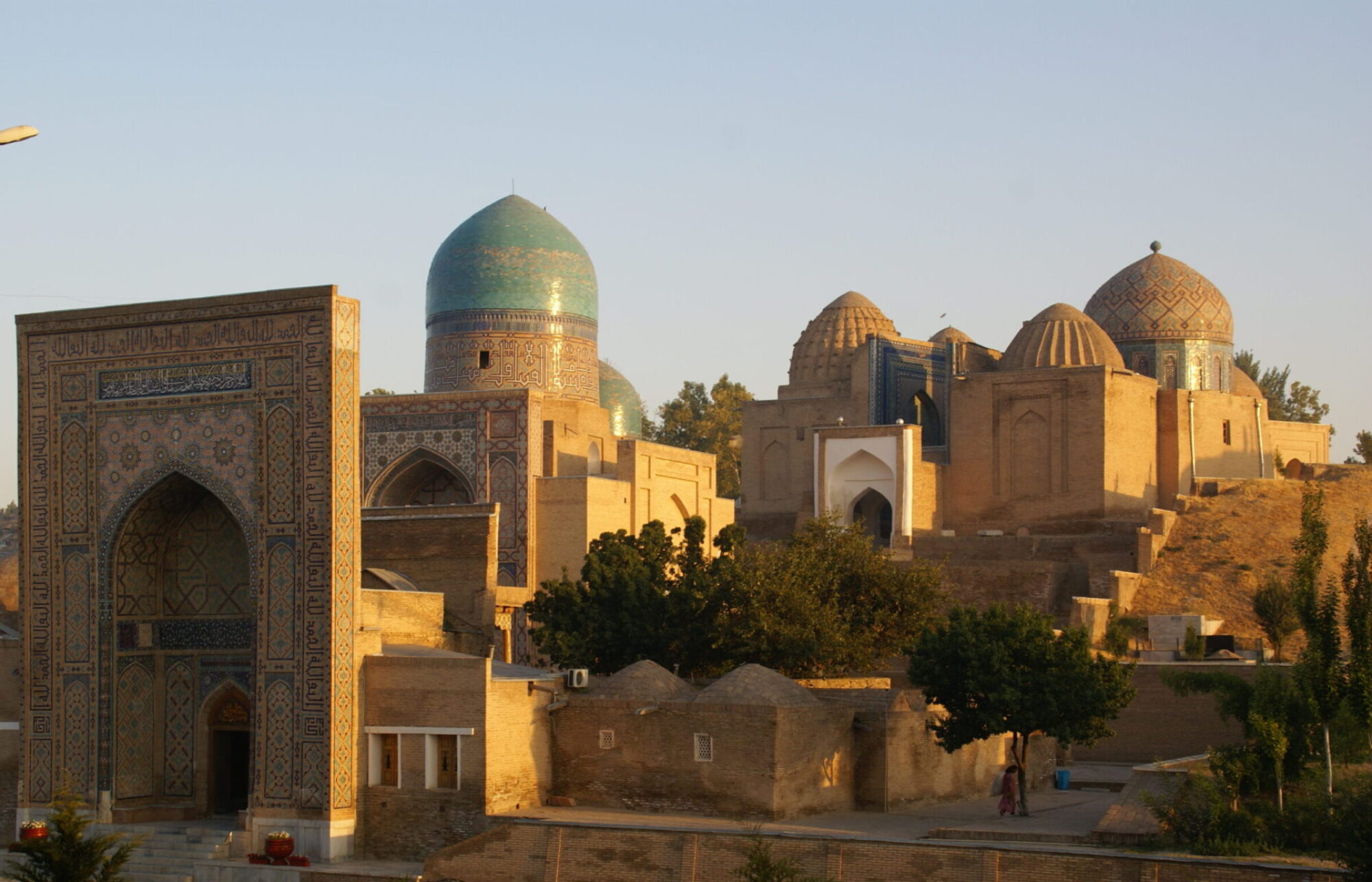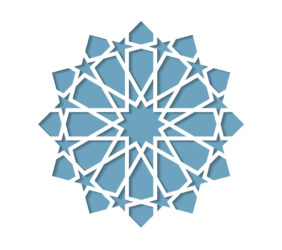Although the present layout of the Registan Square evolved during the 15th–17th centuries, the current state of the madrasas (Islamic religious schools) is the product of numerous restorations campaigns. The northern and southern facades of the Ulugh Beg Madrasa (1417–1420), the oldest surviving monument on the square, were piles of rubble at the beginning of the 20th century, as testified by the photographs of Friedrich Sarre, published in 1901. Thus, its entire courtyard had to be rebuilt and the epigraphic program designed anew. The characteristic hauz (water tank) to the southeast was destroyed. One of the western minarets collapsed in 1870. In the autumn of 1918 it was noticed that the northeastern minaret of the Registan façade had started to tilt. As a result, a lot of engineering effort went into the straightening of the original minarets along the Registan. The first reconstruction project was initiated in 1920 by Mikhail F. Mauer, the chief architect of Samarqand since 1917. After a decade of preparations, the northeastern minaret was straightened in 1932 by the Moscow engineer Vladimir G. Shukhov. In the 1950s E. O. Nelle produced the drawings for the straightening of the southeastern minaret, the work was executed by the engineer E. M. Gendel in 1965.
The earliest restoration work at the Shir Dar Madrasa (1616–1636), the second oldest monument on Registan Square, was carried out by Boris N. Zasypkin and started in 1925. Unlike his later Soviet colleagues, in the 1920s Zasypkin was pleading for: “preservation of the monuments in the same manner as they came down to us.” He insisted on collaboration with local craftsmen and masons, and on the usage of materials already found in the monuments themselves such as the original brick and locally produced alabaster.
What had been little more than a shell with a facade of the Tilla Kari Madrasa (1646-1660), the new Shaybanid Congregational mosque in the 17th century, was completely re-built. The much-photographed dome one sees today was added during a long restoration campaign that ended in 1975. There are no existing photographs or drawings of the original dome that collapsed after a major earthquake in 1818. One of a very few published prints is presented in this exhibition.
In 1982 the Registan was revealed to the Soviet public in its presumed former glory, and the restoration team lead by Konstantin S. Kruikov honoured. The later Soviet restorations focused mainly on the rebuilding of the three Registan madrasas with reinforced concrete. The main scientific adviser, Kriukov, believed that the exterior decoration was a sheer garment worn by the construction itself. Thus the refurbishment of all Registan madrasas with newly manufactured glazed tiling was merely a question of efficiency. The reinforced concrete dome shells were a manifestation of Soviet technological progress that would ensure the longevity of the madrasas beyond the frequent tremblors of Central Asian earthquakes.

Ekrem Canli, CC BY-SA 3.0. https://upload.wikimedia.org/wikipedia/commons/0/00/Registan_square_Samarkand.jpg

